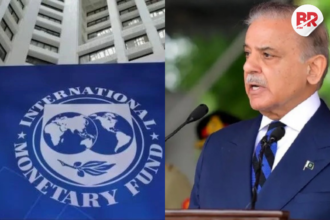
“Pakistan sowed terror—and now it’s reaping chaos.”
As India intensifies its offensive under Operation Sindoor, delivering calculated blows to Pakistan’s terror infrastructure, a parallel storm is erupting in the west.

The Baloch Liberation Army (BLA) has launched a coordinated blitz of 71 attacks across 51 locations in Balochistan, striking when Pakistan is weakest. This isn’t a coincidence—it’s a convergence of long-suppressed fury and strategic timing.
This two-front squeeze could mark a historic turning point in South Asia’s power balance—and spell disaster for Pakistan.
The Forgotten Uprising: Why Balochistan Is Bleeding
Balochistan, Pakistan’s largest but most neglected province, has long been a site of quiet resistance. Rich in natural resources like gas, coal, gold, and copper, it’s been ruthlessly exploited by the Pakistani state, while its people remain impoverished and persecuted.
For decades, the Pakistani military has used disappearances, extrajudicial killings, and torture to silence dissent. Entire villages have vanished overnight, and journalists who dare to speak out either flee or die.
But the silence is over.
The BLA’s recent wave of attacks, under Operation Herof, has killed 130 Pakistani soldiers in the past year alone. With 71 new strikes, the rebels are now pushing their offensive into high gear—testing the overstretched Pakistani military and preparing for a possible mass rebellion.
Why This Is India’s Moment
The Pahalgam terror attack, carried out by Pakistan-sponsored jihadis, triggered a ruthless and calculated Indian response. Under Operation Sindoor, India has:
- Destroyed 9 major terror camps in PoJK and Pakistan
- Hit 8 Pakistani airbases, radar installations, and military outposts
- Successfully repelled counterstrikes from Pakistan with zero territorial loss
India’s precision strikes have exposed the hollowness of Pakistan’s defense. It’s no longer the global victim—it’s the global instigator caught in its own web.
Now, as India applies military pressure, the Baloch rebels are seizing the chaos, amplifying Pakistan’s internal collapse.
For India, this dual-pressure scenario is a strategic windfall.
A clear Msg to Pakistan & China
From Baloch Liberation Army 🔥🔥☄️☄️Freedom of Balochistan pic.twitter.com/McRY6GEla1
— Shahaan Baluch (@Shahaanbaloch95) May 9, 2025
China’s Billion-Dollar Dilemma in Balochistan
Pakistan often parades China as its “all-weather ally,” but that alliance is under siege.
The China-Pakistan Economic Corridor (CPEC)—a crown jewel of China’s Belt and Road Initiative—runs through Balochistan. But the BLA doesn’t see CPEC as development. They see it as colonial loot. And they’re fighting back.
Over the past few years:
- Dozens of Chinese workers and engineers have been killed
- CPEC convoys and infrastructure have come under repeated attack
- Gwadar Port, a key Chinese investment, is under constant threat
Now, with the Pakistani army distracted by Indian strikes, China’s investments are hanging by a thread. Billions of dollars could evaporate overnight if the rebellion snowballs.
China faces a grim choice: withdraw, or risk becoming collateral.
Is Pakistan Headed for Internal Collapse?
Let’s connect the dots:
- A battered military reeling from Indian retaliation
- A surging Baloch rebellion hitting deeper and harder
- A collapsing economy, with inflation spiraling and IMF breathing down its neck
- Global isolation, as Western nations grow wary of Pakistan’s terror ties
The situation is dire. Pakistan’s army, which once called the shots, is now defending multiple fronts. The BLA’s attacks have grown not only in number but also in **sophistication—**including suicide bombings, drone strikes, and coordinated ambushes.
Patriots #WelcomeToBalochistan
Baloch are removing Pakistan flags from Balochistan.@hyrbyair_marri @narendramodi pic.twitter.com/6DRgpvxqVL— Mir Yar Baloch (@miryar_baloch) May 13, 2025
And unlike previous years, the world is watching. Western powers, especially the U.S., are now questioning their blind support to Pakistan, especially when it fails to secure even its own territories.
The Irony Is Brutal
For decades, Pakistan exported terror into Kashmir. It trained and funded insurgents, destabilizing the region and costing thousands of lives. Now, as its own backyard erupts in flames, it’s seeking global sympathy.
But the world has changed. The narrative has shifted.
Pakistan is no longer a victim—it’s a perpetrator trapped in a karmic backlash.
Also Read 6 Attacks in 48 Hours: BLA’s Brutal Strikes Expose Pakistan’s Balochistan Bloodbath- See the Video
What Lies Ahead?
Three scenarios are now unfolding:
- India tightens the military noose, further dismantling Pakistan’s terror infrastructure
- The Baloch rebellion evolves into full-blown insurgency, pushing for secession
- China withdraws from CPEC, marking a catastrophic loss for Pakistan’s foreign policy
In all three, Pakistan loses.
India’s strategy has exposed the fault lines. The more Pakistan retaliates, the deeper it falls into its own trap. And if the Baloch rebellion gains international recognition or diaspora support, Pakistan may lose Balochistan altogether.
Final Thought: The Monster Turns Inward
For years, Pakistan nurtured terror as statecraft. It thought it could control the fire.
But that fire is now burning down its house—from the Line of Control to Gwadar’s coastline.
India’s Operation Sindoor has shattered illusions of military parity. The BLA’s offensive has shown that the resistance inside Pakistan is real, organized, and unafraid.
Pakistan sowed terror. Now it’s bleeding from every corner.
Karma? Absolutely.
Also Read Adityanath Backs Modi’s Anti-Terror Push for New India












